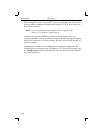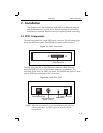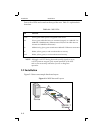
Terms Introduction
1 - 2
The PDF versions of the MSS manuals are located in the
manuals
directory of
the CD. Use the Adobe Acrobat Reader (widely available on the Internet at no
charge) to read and print all or parts of the manual from the PDF Þle.
1.1 Terms
In this manual, the following terms are used to describe parts of a network.
Host
A computer attached to the network. The term host is
generally used to denote interactive computers, or
computers that people can log into.
Node
Any intelligent device directly connected to the Ethernet
network such as a host, a printer, or a terminal server. All
nodes have their own Ethernet addresses. The MSS is a
node. Devices connected to the MSS are not nodes.
Session
A logical connection to a service. A typical session is a
terminal connected to a host through the server.
Local mode
The MSS user interface. It is used to issue conÞguration
and session management commands and to establish
connections. When in Local mode, users will see a
Local>
prompt.
1.2 Protocols
A network protocol is a method of communicating over the Ethernet. Each
protocol speciÞes a certain arrangement of data in the Ethernet packets, and
provides different services for its users. The MSS supports the following
protocols:
¥ TCP/IP
Support includes Telnet, Rlogin, UDP, and DNS. The Telnet
terminal protocol, supported on most UNIX systems, is an easy-to-
use interface that creates terminal connections to any network host
supporting Telnet. Rlogin is a protocol that allows users to initiate a
TCP/IP login session. UDP (User Datagram Protocol) is a
connectionless protocol that results in smaller packet headers, no
session overhead, and the ability to send to multiple hosts. The
MSS also supports the use of Domain Name Servers (DNS),
allowing a network nameserver to translate text node names into
numeric IP addresses.


















